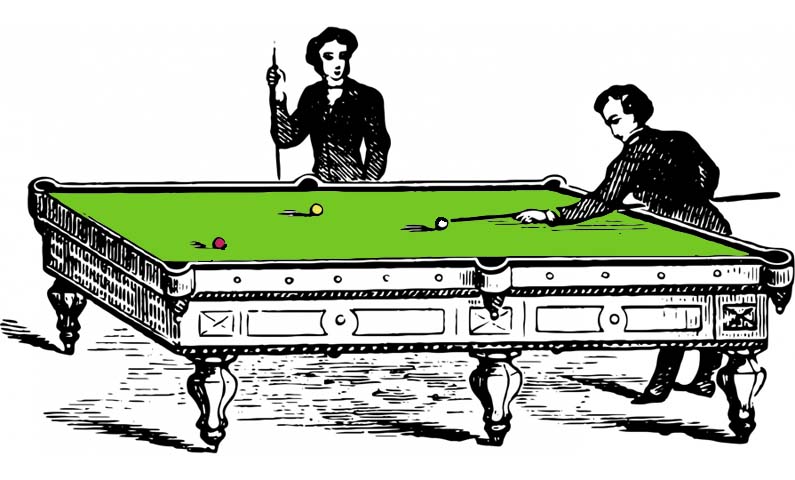
English billiards
Cleopatra: “Let it alone. Let’s to billiards. Come, Charmian.” ~ from Shakespeare’s ‘Antony and Cleopatra’ (1606)
This shows not only that the French game of billiards was known in Britain (London, anyway) at least 400 years ago, but also that it was played by both genders as a genteel pastime. It began as an indoor table-top version of croquet (hence the green cloth) and, as the game became popular in upper-class circles, it presented another outlet in which furniture-makers could show their creativity in table design.
English billiards, the forerunner to snooker and played on the same size table, came about in the 18th century alongside the evolution of the game’s accessories ~ cues replaced maces, the hoops disappeared and there were two cue balls and one red object ball ~ and amendments to the rules ~ points could be scored by hitting the opponent’s cue ball and the object ball in the same shot (called a ‘cannon’) as well as by pocketing a ball. The French continued with pocketless tables while the English preferred to keep all options.
Cabinetmakers Gillow & Co. were the first British company to make a table for English billiards, in 1770. Other renowned British manufacturers were Thurston & Co. and Burroughes & Watts Ltd..
(Image [partly coloured]: Dawn Hudson at publicdomainpictures.net / CC0)
